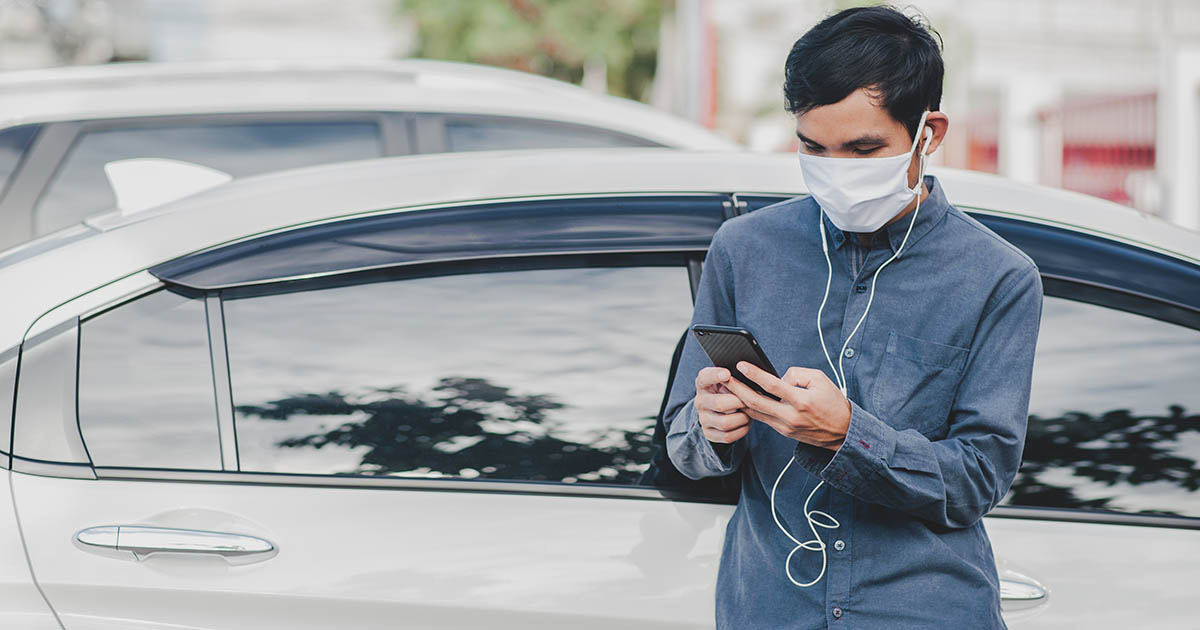What We Know Now About Epilepsy and COVID-19

- People with epilepsy are not at higher risk for COVID-19
- Most people with epilepsy don’t have worse seizures due to COVID-19
- Surveys done during the spring of 2020 showed that about 1 in 5 people with epilepsy said they had problems getting healthcare.
- People with epilepsy have reported more problems with mood due to the COVID-19 pandemic.
- Virtual or telephone visits are a great way to stay in touch with your health care team.
Epilepsy News From: Tuesday, January 05, 2021
Leah Blank MD, MPH, shares what we know now about COVID-19 and epilepsy. Dr. Blank is an epileptologist (epilepsy specialist) and assistant professor of neurology and population health science and policy. Dr. Blank also received in 2020 the EF/AES Junior Investigator Award.

Are people with epilepsy at higher risk of getting COVID-19 or getting severe COVID-19?
The short answer is no: people with epilepsy are not at higher risk of getting COVID-19, getting a severe case, or dying of COVID-19.
People with epilepsy, however, may have other diseases that put them at higher risk. These include:
- Diabetes
- Heart or lung disease
- High blood pressure
- Diseases that make the immune system weaker, like some cancers.
Does COVID-19 cause a significant worsening of seizures in most people?
It appears the answer is no: most people with epilepsy don’t have more seizures due to COVID-19.
However, about 1 in 4 persons with epilepsy say they had more seizures during the pandemic.
We think there are a few reasons for this increase in seizures:
- More stress, which increases the risk of seizure.
- Difficulty getting medicines or getting ahold of their health care provider during the COVID-19 crisis.
What can help?
- For stress, find tips on how to manage your stress from the Epilepsy Foundation Wellness Institute.
- Epilepsy doctors are working with their teams to figure out how to best help their patients during this difficult time. When you get in touch with your provider, let them know what would help you. This information could help other patients.
What challenges have people had accessing healthcare and medicines?
Surveys done during the spring of 2020 showed that about 1 in 5 people with epilepsy said they had problems getting healthcare. This was especially true where hospitals were filled with COVID-19 patients and in-person and virtual visits for epilepsy were not possible.
Epilepsy providers are trying to figure out how to best help their patients during this challenging time. Virtual or video visits are one solution. Keep in contact with your provider to let them know what you need.
Have people with epilepsy experienced more problems with depression and anxiety?
This year has been difficult. People with epilepsy are at higher risk of depression and anxiety. During the COVID-19 crisis people with epilepsy have reported more problems with their mood. These mood changes are likely because of stress from:
- Negative information in the media
- Poor sleep
- Changes in routines
- Financial stress (job loss, reduced salaries or hours, etc.)
- Social isolation (not being able to see loved ones or friends)
How have they dealt with feeling more depressed and anxious?
Many clinics are forming virtual support groups and are increasing referrals for virtual therapy or social work to support people with epilepsy. If you are experiencing sadness or feeling anxious, you should reach out to your health care provider to ask what resources they might have to help you.
The Managing Epilepsy Well Network has programs that can help people with epilepsy who are struggling with depression and anxiety. Find a program near you.
How has care delivery for epilepsy care changed since the COVID-19 crisis?
The COVID-19 crisis brought large and rapid changes. Many clinics switched from seeing patients in person to seeing patients using virtual visits such as video or phone. Your epilepsy providers are likely still seeing at least some patients by phone or video.
These changes happened quickly, and many patients and providers had to work around bumps along the way. Fortunately, recent surveys show that most patients and providers have positive views of virtual visits. Virtual visits are likely to continue to be a way to get safe, fast care when travel to an in-person visit is dangerous or difficult. Virtual visits should help ensure that people with epilepsy can get the care and medicines they need as the COVID-19 crisis continues.
Find a checklist from the Epilepsy Learning Healthcare System about how to make the most of your telehealth visit.
Authored by
Leah Blank MD
Reviewed by
Elaine Wirrell MD
Reviewed Date
Tuesday, January 05, 2021
